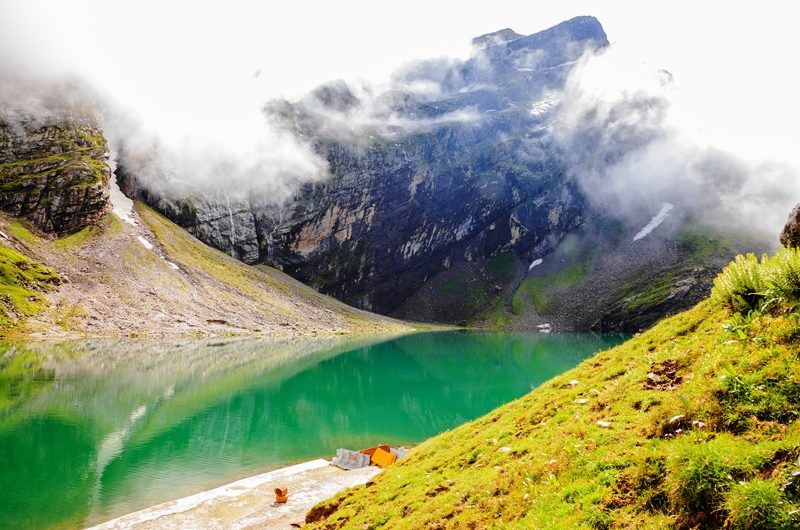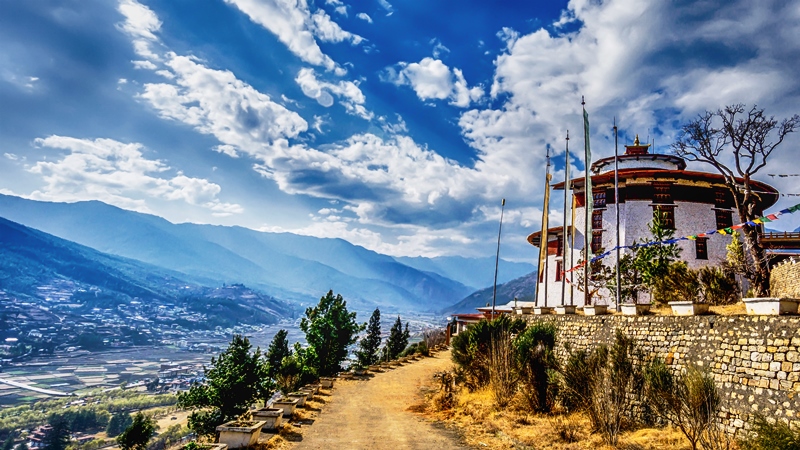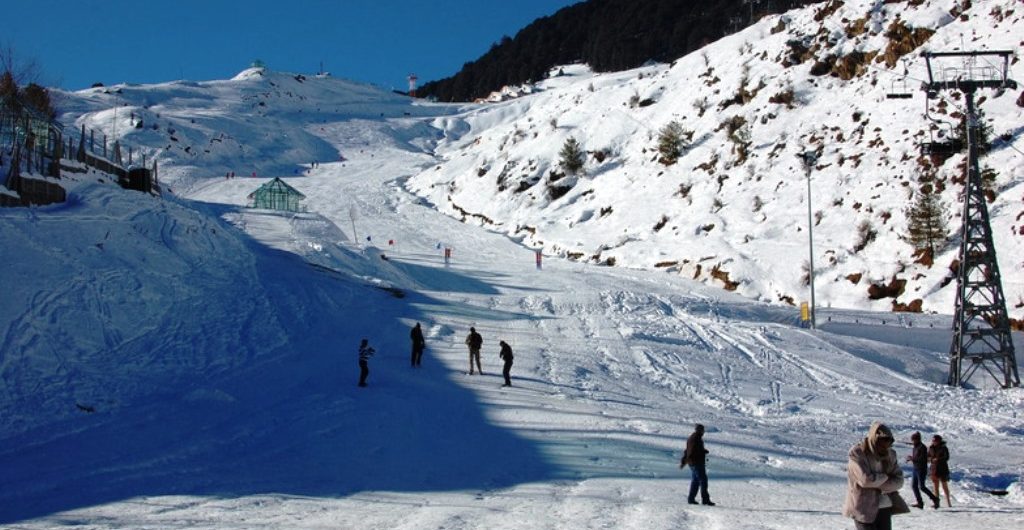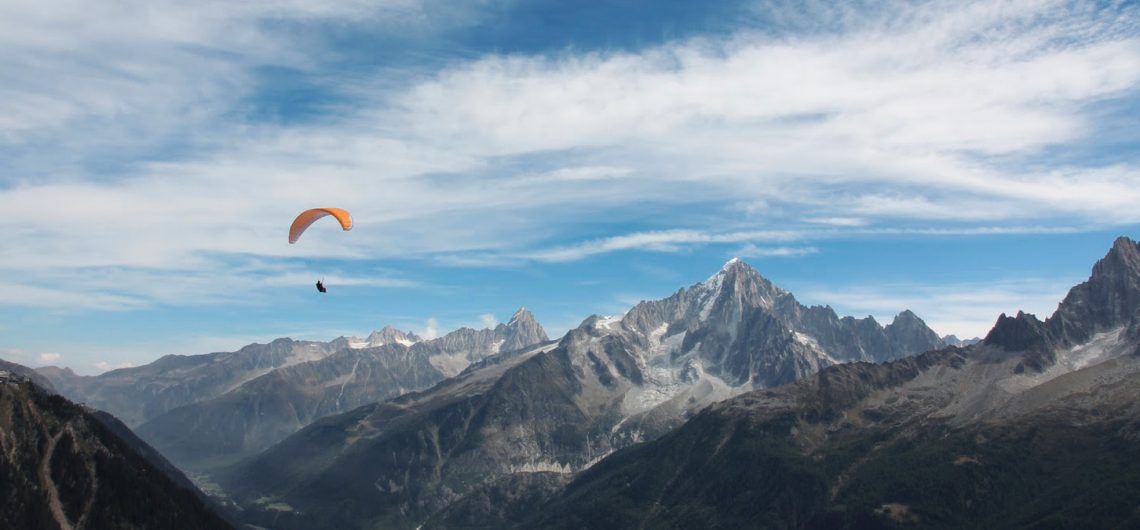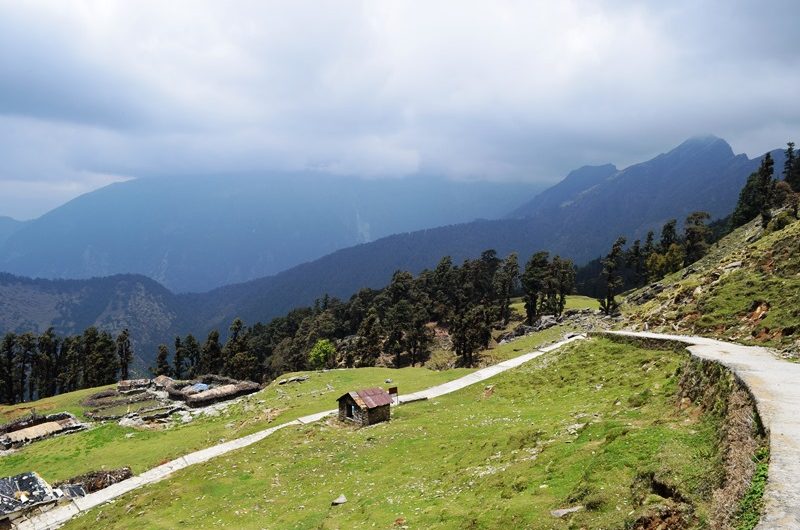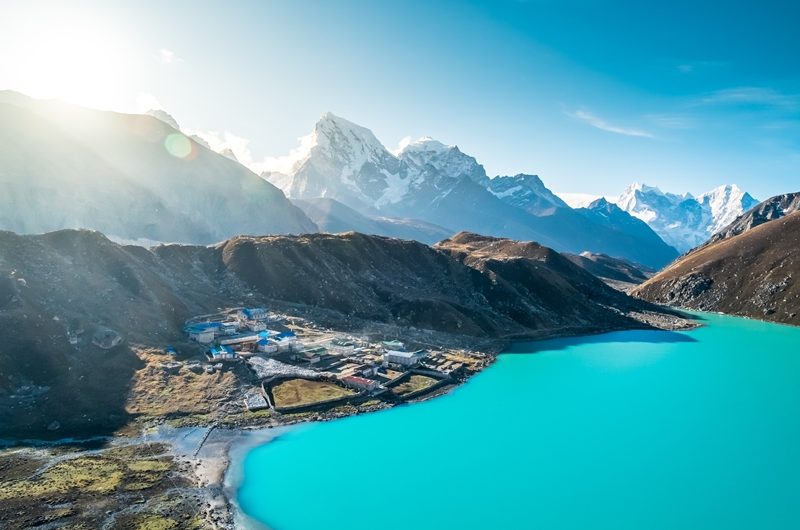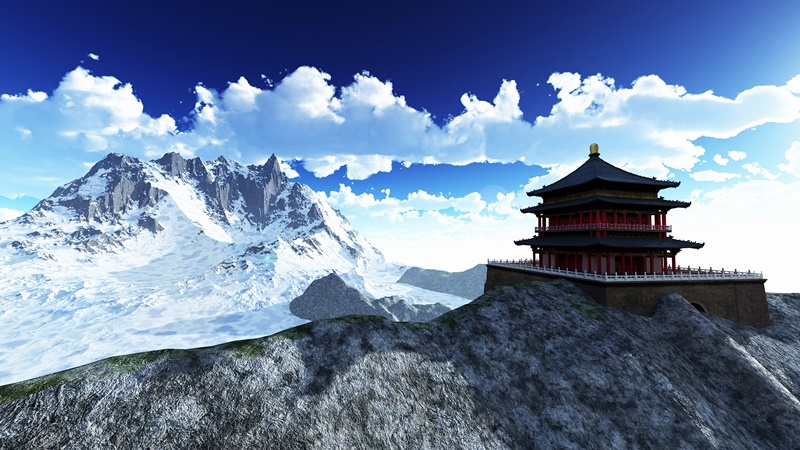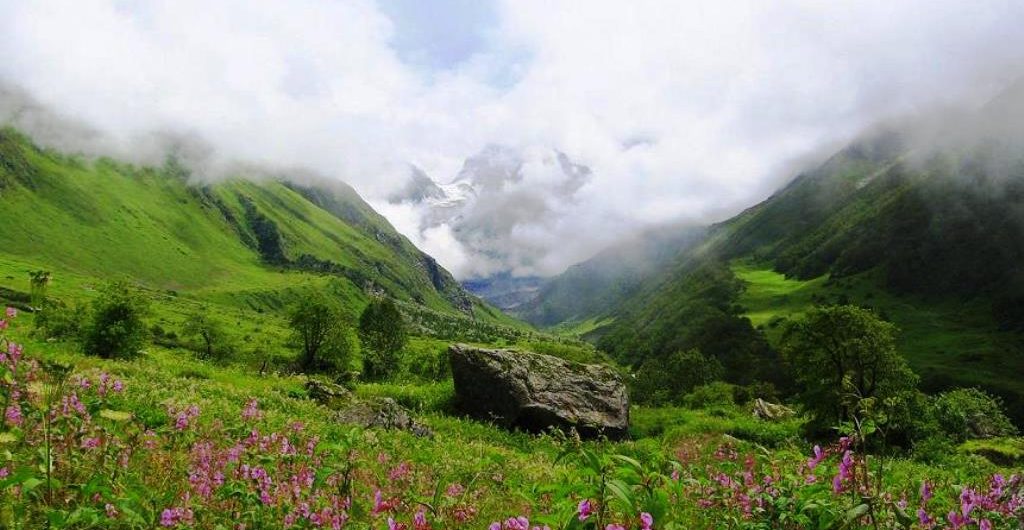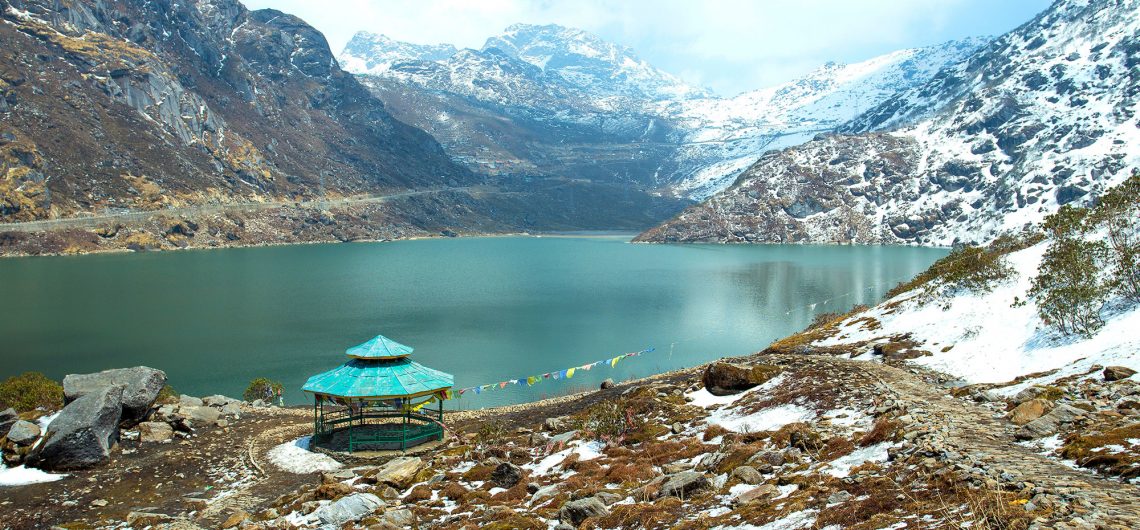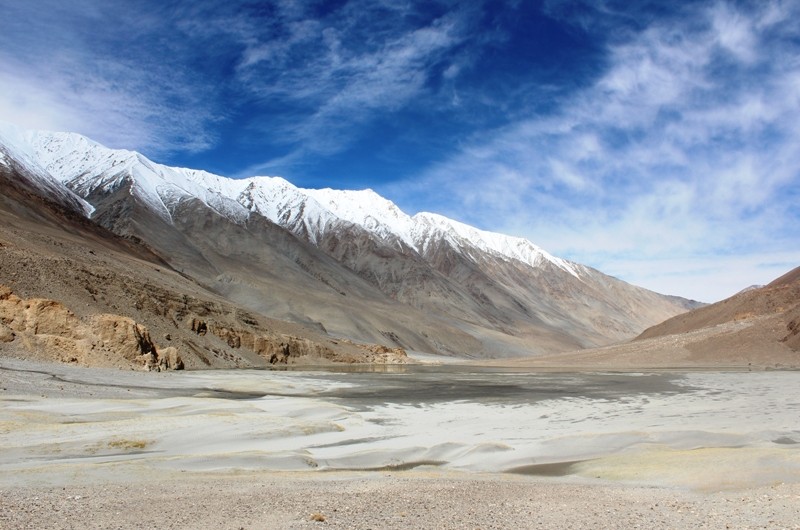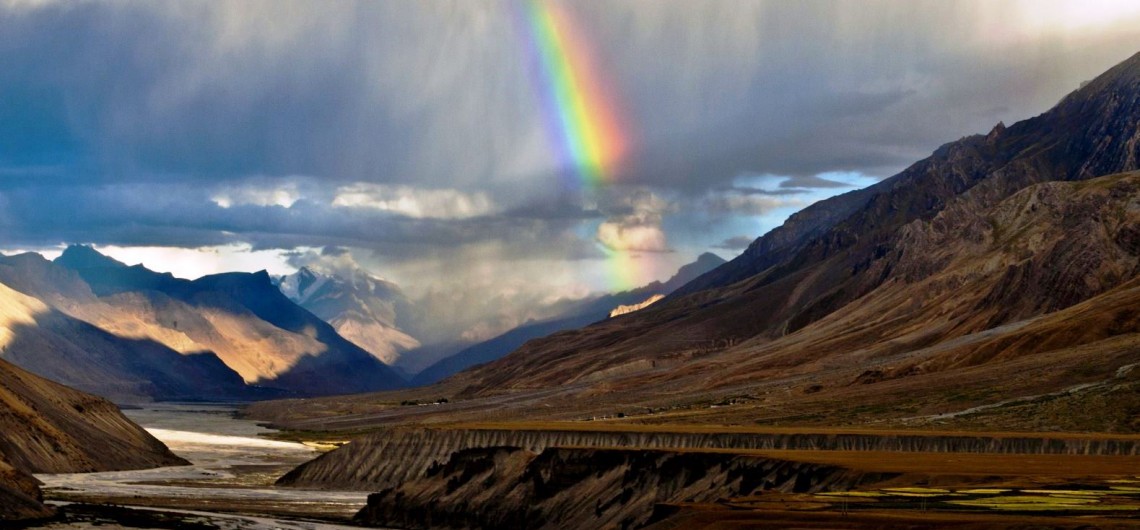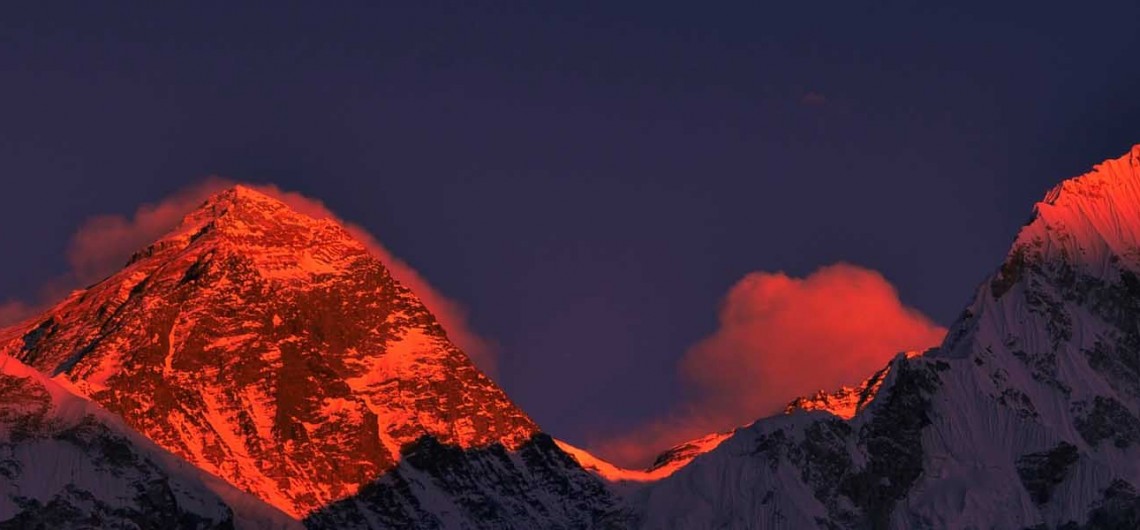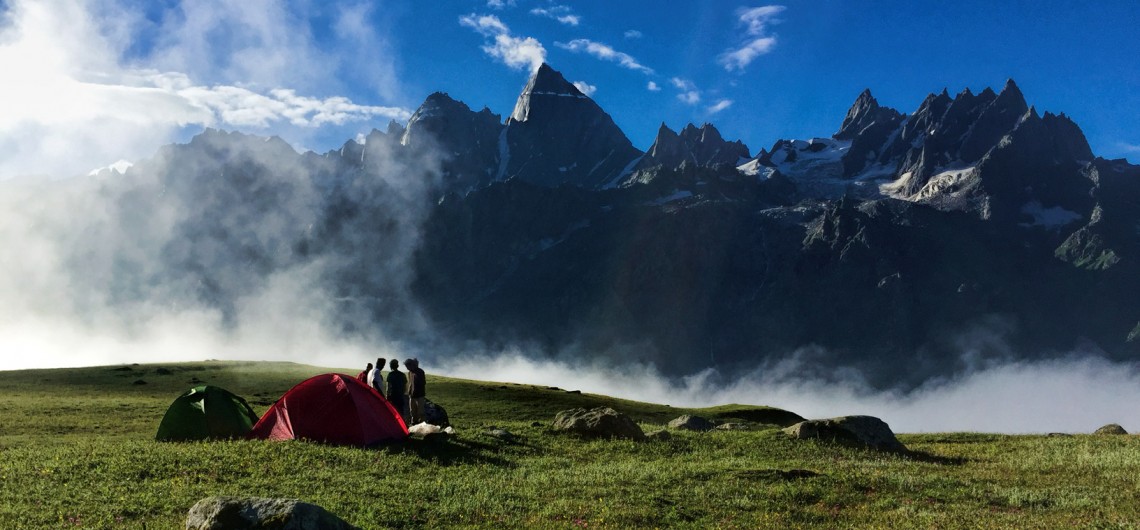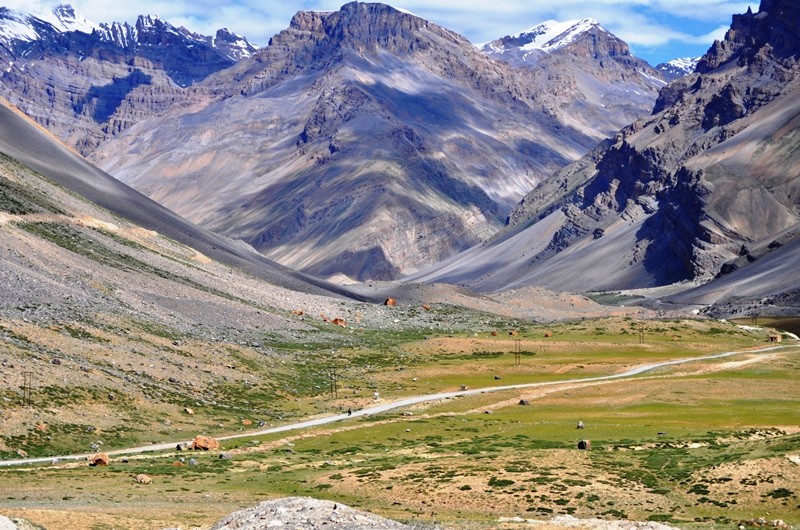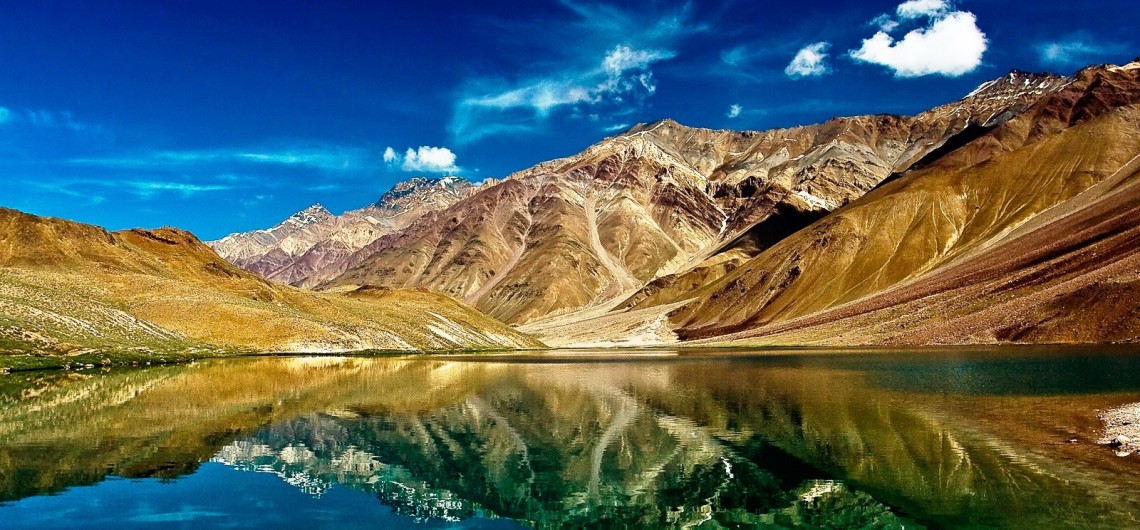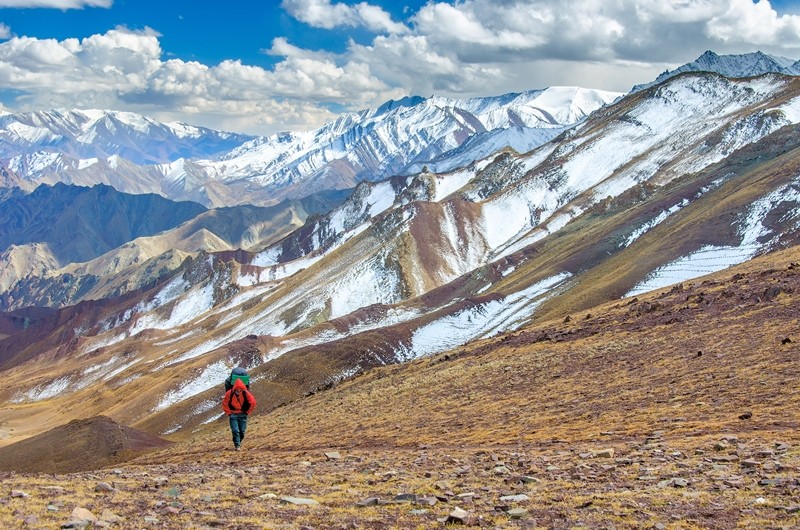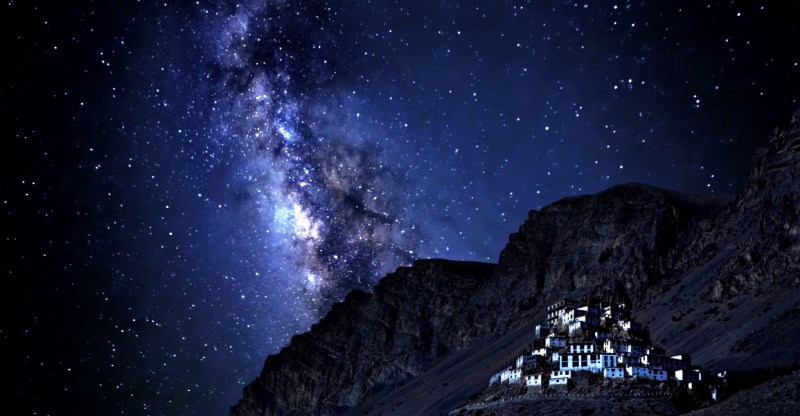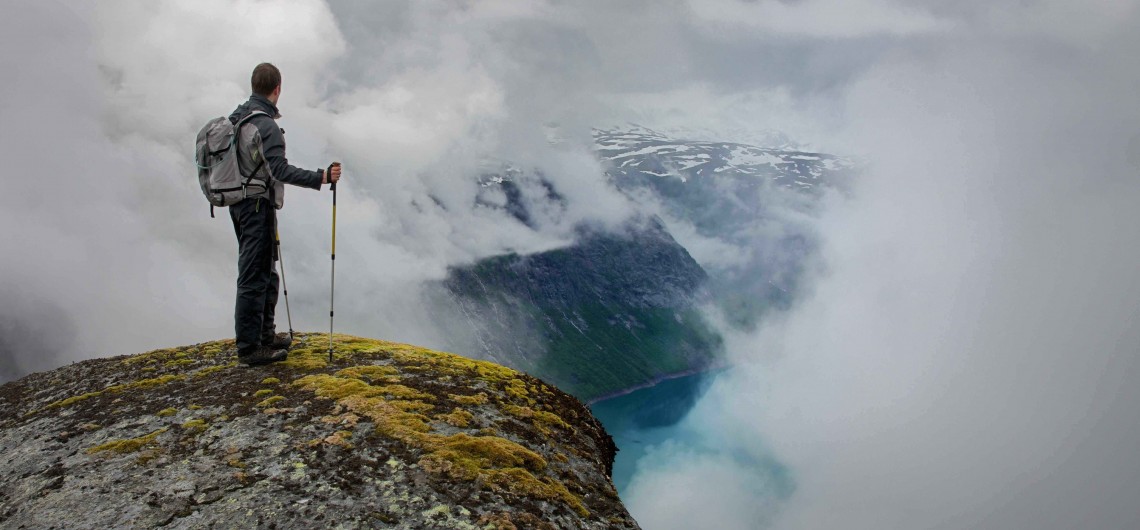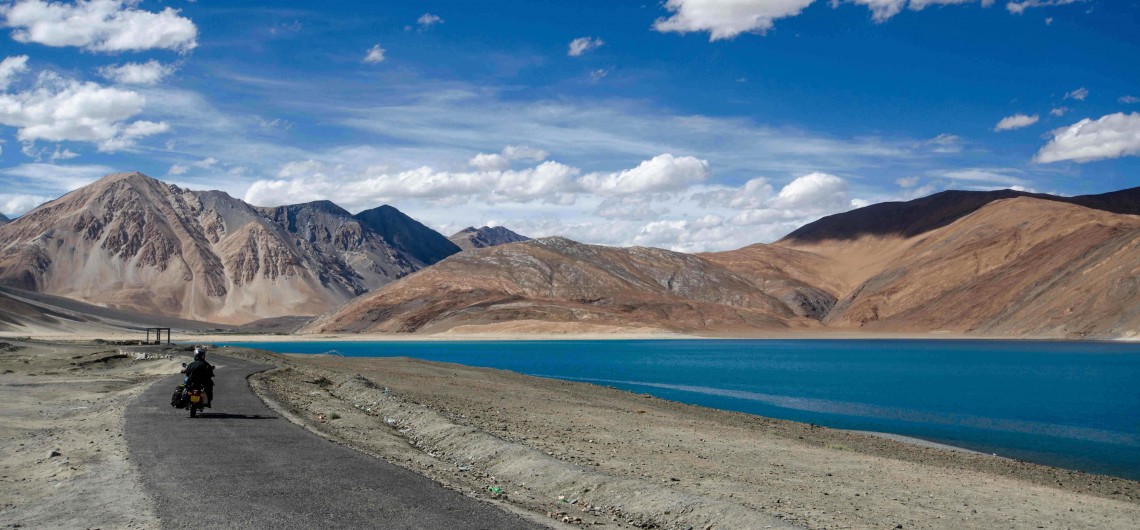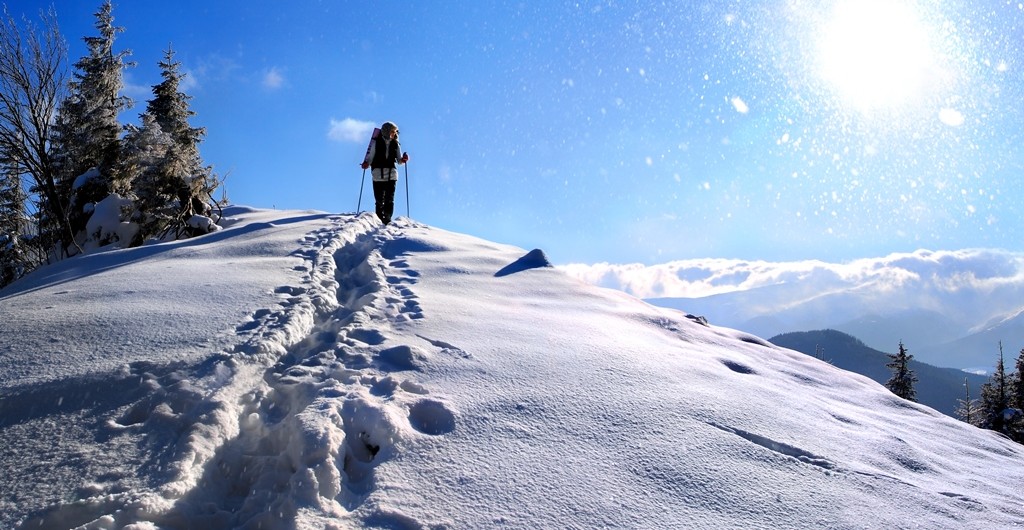The beauty of the Himalayas lies not only in its majestic snow-clad peaks, but also in its indigenous people and wildlife…also in its rugged terrains, and breathtaking rivers and lakes. And to witness these facets of this region, nothing can better than a trekking expedition! So, if you are planning a trip to this part of the world, then be ready to indulge in some adrenaline-pumping trekking action.
While talking about the kingdom of Bhutan, nothing much really comes to mind; except for some basic facts like it lies in the Eastern Himalayas and is a landlocked country wedged between India and China. But, most of us don’t have the slightest clue about what this small country actually is. It has been enveloped in mystery for a long time, until the curtain, which has kept it hidden from the eyes of the world, slowly started lifting and the universe got to know that Bhutan is considered the happiest place on earth. Not only that, but it also measures its growth and development by calculating the Gross National Happiness? Yes, that’s true!
Whenever I ask someone if they like winters, most answer me in the negative. And I think it is justified to some extent as the season, especially in North India, brings with it coldness, smog (not fog or mist) and sometimes strong and chilly winds. The sun seldom shines, and most of the times it does, it is shadowed by the light haze, which sometimes persists for many days. At least, this is what happens in Delhi. I have been patient up till now, letting winters pass as I lay curled up in a blanket or underneath layers of clothes, but no more. Enough is enough, I say. Let us get up and go out there even in the season, when everything seems gloomy.
Contrary to our belief, winters, and specifically winters in India, are not a cause for that much worry. Compare the season in our country to some other places like the Baltic, Siberia and northern Canada, where nothing grows and temperatures of –40 degree Celsius are regular. Does any such thing happen here? No, right? Winters here are much more bearable, and we still cry about the season being too cold. And, what if it is cold?! We have thermals and woollens. So, let us put them on and head out so we can live life to the fullest, leaving the so-assumed dullness of the season behind.
Here is a description of what you could do and see in the country during the winter season.
Visit the Hill Stations of the North
India has no dearth of hill stations, and these are the kind of places I love the most. Nainital, Srinagar, Shimla, Dalhousie, Munsiyari, Manali, there are so many in the Himalayas. All these lie between elevations of 5000 feet and 10000 feet, making them ideal for a relaxed vacation. It snows in all these places, but not as much as it does higher up in the mountains. For me, this is the perfect altitude range to have fun and not be frozen by the cold. All these places have coniferous trees that are all covered with snow. I just love such sights; it is the quintessential mountain scene.
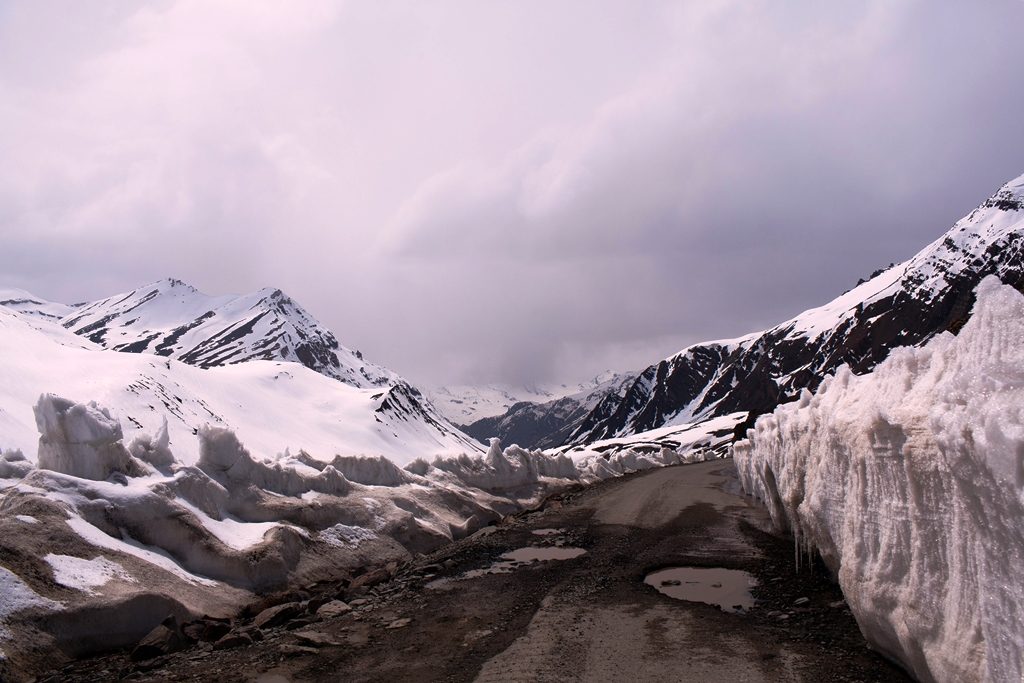
You could walk around the towns, admiring the vistas, and visit the popular places of interest there. Also, remember to try some local delicacies that would make your experience even better. If you go during Christmas, there may be some celebrations going on, especially on the Mall Road of Shimla, where the famous Christ Church is located. The Dal Lake in Srinagar is completely frozen during the season, resulting in an astonishing sight. Another such scene to admire would be of fresh snow, falling on the waters of Naini Lake as you take a walk on the quiet Thandi Sadak.
Go Trekking
Aah…trekking, a good way to explore mountains and be close to nature. Most consider trekking as a summer activity, and rightly so as the paths are clear then. But those, with an adventurous soul, can also try hiking in winters, when the landscape would be white with snow. There are numerous sites within the Himalayas, to where trekking tours are organised in the winter season. While no trek would be easy in winters, they all promise loads of thrill; is it not why we would trek in snowy conditions? For the challenge? Some of the places you could trek to in the Himalayas in winters are Naggar, Brahma Tal, Dalhousie, Kasol, Kheerganga, Tirthan Valley, Triund, Kedarkantha, Prashar Lake, Tungnath, Chandrashila, Kuari Pass and Indrahar Pass.
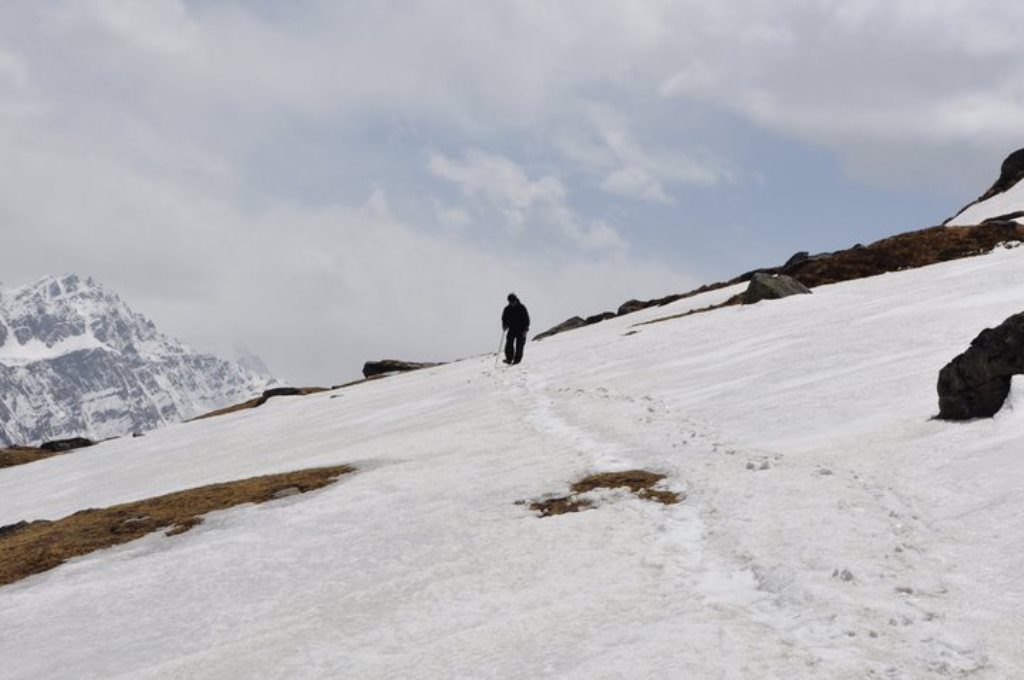
For those of you, who cannot summon the strength and courage to go trekking in snow, there are loads of hiking trails in the Western Ghats as well, where the cold will be nowhere as much as in the Himalayas. Even in the height of winters, the weather here remains cool and pleasant. The hills are not even as rugged as the Himalayas, making it is easier to hike here. So, if you are considering this option, you can go on a trekking tour to Mullayanagiri, Antaragange, Durga Hill, Ramanagara and Kodachadri.
Explore the Northeast
If you want to see primitive cultures and learn about warring peoples, then the north-eastern part of India is perfect as it is home to hordes of tribes. The summers here can be quite warm, and the rains are like a pestilence; hence, the winter season is perfect to come here. There is so much to see and do in the region that one trip will never be enough. Among the best things to do in the Northeast is taking a walk through the lush tea plantations of Assam and learning about the different types of teas produced in the state. A mystical place in Assam is the village of Mayong, where a large number of occultists, who claim to have spells to cure various diseases, live.
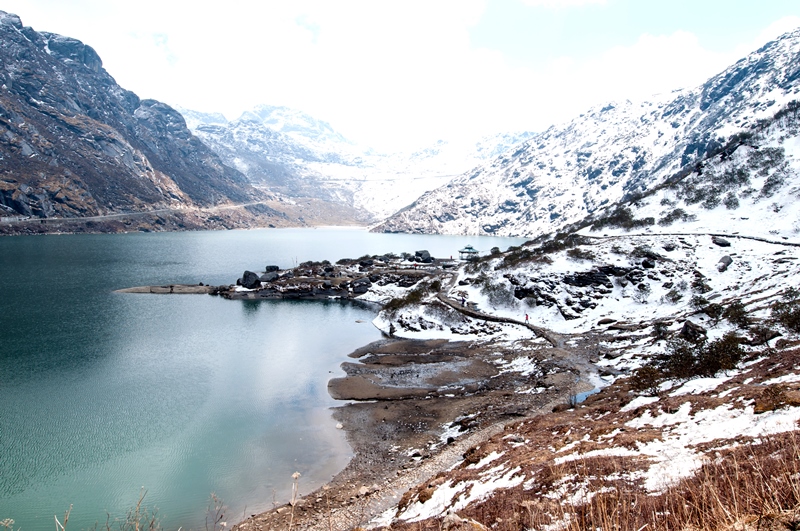
I’m personally planning to head to Meghalaya to explore astonishing caves, many of which have a river. But, what I’m most interested in is trekking to a Living Root Bridge that the locals make by letting the branches of rubber trees entwine around the trunks of betel nut trees. Nagaland is where I would be heading in order to meet the indigenous and eponymous Naga people, who have a rich warring culture. One great way would be to take trips to villages deep in the hills for a chance to stay with the tribesmen and get a first-hand look at their customs. If you don’t have that much time, then do attend the Hornbill Festival in December, where people from all Naga tribes display their dances, music, customs and food.
For those, who want to learn about the Buddhist faith, Arunachal Pradesh and Sikkim are the best places to visit in Northeast India. There are so many monasteries or gompas in these states like those in Tawang, Rumtek, Taktsang (different from the one in Bhutan), Urgelling, Bomdila, Pemayangtse and Phodang. Natural ponds like Sangetsar Lake in Arunachal Pradesh and Tsomgo Lake in Sikkim, and the town of Lachung in Arunachal Pradesh are also great destinations to explore in winters. The town, with snow-covered spruce trees, and typical mountain homes with sloping roofs, might remind you of a hamlet from a fairytale; it is that pretty!
Dare to go to Ladakh
Ladakh, the northernmost region of India, is arguably one of the best places for an adventure lover. Only the bravest venture there in winters as the season is characterised by heavy snowfall and freezing temperatures for 4-5 months at a stretch. Just reading about it gave me shivers, but I am determined to push myself to the limit, let me see what I’m made of. Though Ladakh is a summer destination, it is so famous around the world that it gets clogged with tourists during this time also. If you want a quiet retreat and desire to come face to face with its true magnificence, then winters are perfect for a visit.
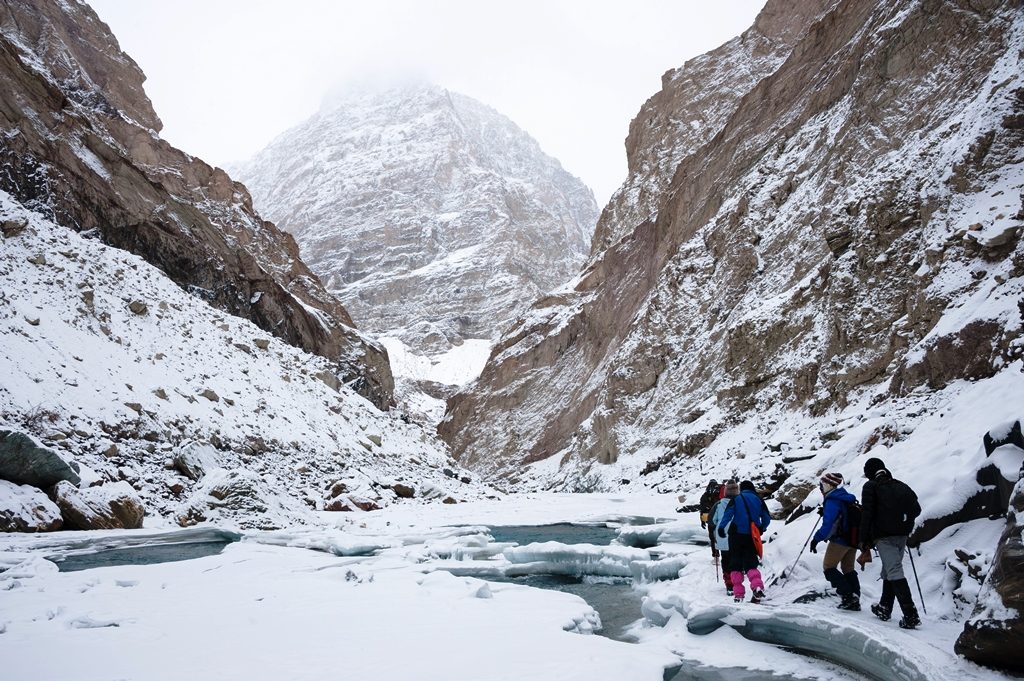
The essential thing to do here during the season is the famous Chadar Trek on the frozen Zanskar River. It takes you past numerous frozen waterfalls and lets you spend a night in a cave. You could either head to Naerak Pullu and head back to Chilling or go all the way to Lingshed, tracing the ancient route, taken by the locals of Lingshed to transport wooden logs to Leh, every year. There are so many monasteries here; many built on hills overlooking rivers. As the entire landscape would be covered in snow, the monasteries would look amazing, like something right out of Peter Jackson’s Middle Earth movies.
Try Skiing
One reason, which is desperately making me wait for the arrival of winters, is so I can go skiing. I just love watching people come down snow-covered slopes on skis, twisting right and left. I had followed the recent Winter Olympics religiously and am now determined to do it at least once. I earlier thought that the sport is only tried in places like the Rockies and Alps, but to my pleasant surprise, the Himalayas have no dearth of ski resorts. There are so many I could pick from; Gulmarg, Kufri, Narkanda, Solang Valley and Auli. Another plus about trying skiing is that many ski tops are reached by cable cars, something I really want to ride. As all these are popular destinations, they are well connected to major cities and towns; therefore, reaching them is not a problem.
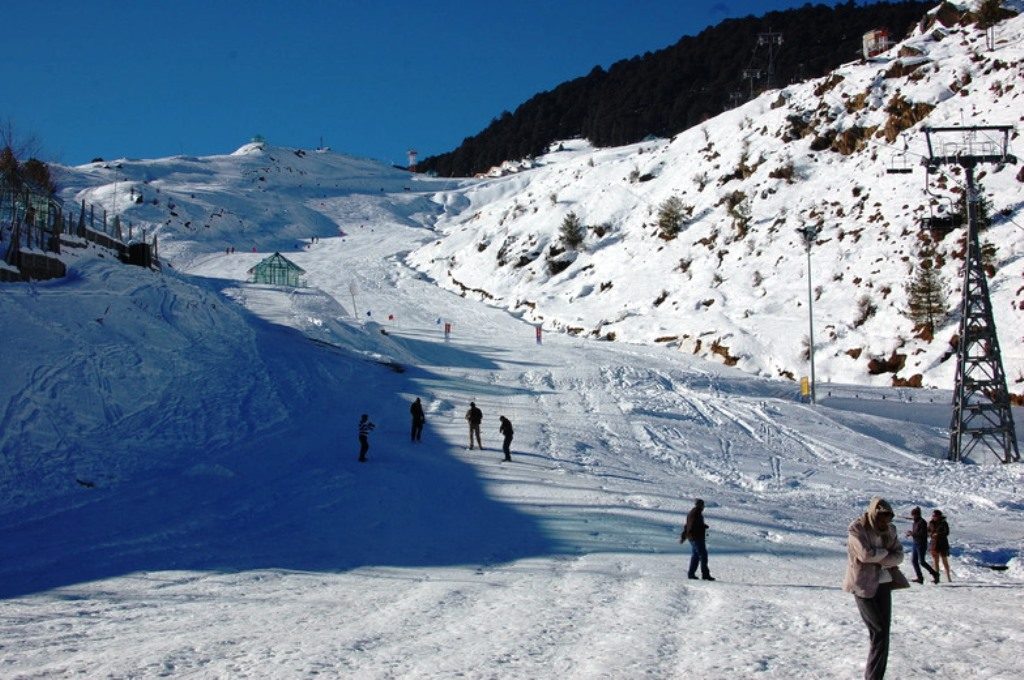
Go on Wildlife Safaris
The incredible geographical diversity of the country blesses it with an astonishing variety of animals. As the summers are quite warm and monsoons are a strict no-no for tourism in national parks and wildlife sanctuaries, winters give you the perfect chance to see India’s biodiversity. Head up North to see animals like Himalayan wolves, Tibetan wolves, black bears, Himalayan brown bears, Himalayan tahrs, bharal and yak. If you go to the Spiti Valley or Hemis National Park, then get a chance to spot the snow leopard, the Himalayas’ most celebrated predator. Peninsular India, on the other hand, is known for its wide distribution of tigers, ranging from Jim Corbett National Park in Uttarakhand all the way to Eravikulam National Park in Kerala, which is also home to the Nilgiri tahr.
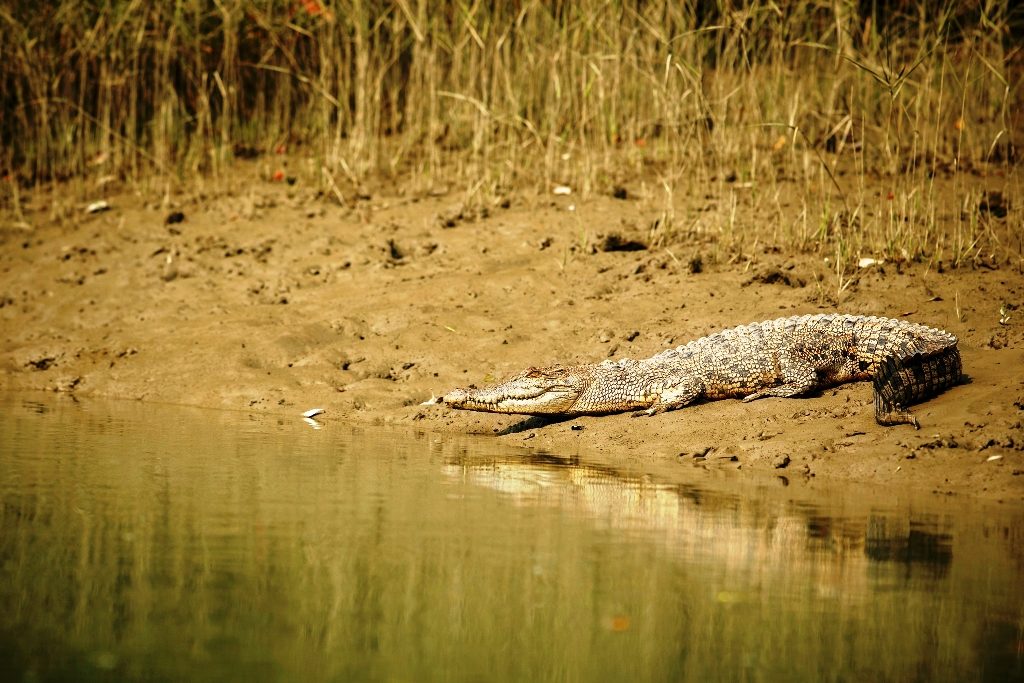
Gir Forest in Gujarat, the only home of the majestic Asiatic lion, is another must visit. If you, by any chance, like snakes (like me), then I suggest you head to the forests of Agumbe in Karnataka. Winters are when migratory birds come to India, and the Rann of Kutch, Keoladeo National Park, Chilika Lake and Sultanpur Bird Sanctuary are the best places to see them.
With so much to do and see, winters will never seem boring to you again. I for one have always loved the season for this particular reason. So, wait no more. Welcome winters with a smile, and pack your bags for a wonderful time.
How many times have we seen birds soar across the sky, and thought to ourselves, “Man, wish I could fly like them.” And, during one such instance of thinking about flying, it struck me…I can actually do it. No, I wasn’t all of a sudden going to sprout wings and fly like a bird. But, what I was going to do was go for paragliding, and that is exactly what I did recently. Now, before I start telling you about my experience, let me just give you an overview of the activity.
Little did I know that my short adventure trek to Chopta Tungnath Chandrashila will turn out to be the adventure of a lifetime! I could so much relate to a quote that I read recently by Lin Yutang, “No one realizes how beautiful it is to travel until he comes and rests his head on his old, familiar pillow”. But for me it was more like an adventure which I survived and at that moment all I wanted to do was to go home and be warm and comfortable!
The only reason that this trek is so close to my heart and I will remember it forever is because I remember how I almost gave up! I gave up on walking further, to save myself from all the pain. It’s good to travel in a group sometimes. If I was on a solo trek I would have been stuck somewhere in the mountains. Not that I mind that, but I would have been surely hopelessly lost!
Aah, Nepal! A trekking paradise! A country, which is home to the world’s highest mountain, needs no introduction to hikers. The country, however, is not only about high peaks, but mountain passes and lakes as well. As a general notion, Ladakh is associated with high mountain passes, but Nepal does not lag behind. It is also home to some incredible mountain passes as well as lakes. What I hope to achieve with this blog is to not only tell you about Nepal’s mountains, but also open up more hiking opportunities for you. Below are some of the most significant high passes and lakes of Nepal that one should know about.
Sometimes, I wonder how it would feel like to reach the top of the highest peak in the world – Mount Everest. I know it would be gruelling, challenging and painstaking to achieve this feat, but somewhere in my heart, I have promised myself to give it a try once in my life. Ever since I saw a picture of the mighty Himalayas in a school magazine, I have aspired to explore this majestic mountain range.
Like any other kid, holidays meant a lot to me, especially when my family planned vacations to the hill stations nestled in the lap of the Himalayas. The snow-clad peaks, the rocky terrain and gushing rivers of this mountain range always enchanted me and kept me asking for more.
Over the years, I have been lucky enough to explore many Himalayan destinations in India. My favourites have always been Auli, Manali, Shimla and Gulmarg, but I can assure you that the rest are as brilliant as these. I have plans to make a trip to Bhutan and Nepal in the future to explore more of this natural wonder called the Himalayas. Besides enjoying the vistas of these mountains, another thing that compels me to go to this part of the world are the several adventure sports one can indulge in. Trekking, rock climbing, mountaineering and rafting are some activities that I love to take part in, in these mountains.
Even though it is hard to choose among the best, but as per my experience and future aspirations, here is a list of the 10 most exciting destinations in the Himalayas.
You must be aware of the fact that our country is one of the richest when it comes to biodiversity. But, sadly the insatiable appetite of humans to hunt for fun has greatly reduced the number of animals here. Thankfully, some people realised the importance of conserving them, and it spawned the need to establish wildlife sanctuaries and national parks. Now, some of these are especially renowned for their conservation efforts while others for their natural scenery, earning them a place in the prestigious UNESCO World Heritage Site list. The latest entry in the natural category of the list is GHNP or Great Himalayan National Park. It is known both for its natural vistas and its efforts in protecting the regional wildlife.
The end of monsoon is here and winter’s on its way. It’s time again to plan a date with the Himalayas. After exploring the majestic Trishul, Nandaghunti and Dhauladhars in Uttarakhand and Himachal in the summers, it is high time we should look east. By east we mean North-east. And there is no better way to explore Eastern Himalaya than to trek to Goecha La Pass. This trek route brings you up and close to Kanchendzonga Mountains like no other. Kanchendzonga or the sleeping Buddha is the tallest mountain in India and the third highest in the world. Trust me when I say that this trek will surpass all your expectations. The mountains are higher than you have ever seen; the climbs harder than what you have done so far and the weather much colder than what you have experienced so far!
That is why it’s my pleasure to list out a few things to keep in mind to best prepare for Goecha La Trek
Know the trail
The Trek is generally moderate since we climb up to 16000 feet. The trail goes through moss covered forests of chestnut, oak, maple, pine, and magnolia and last, but by no means least, the most popularly known Rhododendron trees. We explore the rich bio diversity of the diverse forests throughout the trekking trail. If lucky you may spot many beautiful birds like Red Billed Leothrix, Rufous vented Yuhina, Fire breasted Flowerpecker, and Silver eared Mesia and many others. One encounters not just Mt. Kanchendzonga but also gets a close up view of Mt. pandim, Kabru and Simovo. It is a perfect place for a naturalist and a mountain worshipper. So keep your cameras ready and a writing pad if you would want to take notes.

Preparation for the best experience
One must remember that it is a trek that goes through tough terrain, so one must be physically and mentally strong to complete this, as in a span of 8 days one walks for about 90 odd kilometres. Especially on the day you cross the Goecha La Pass, it gets long and tiring. One must be able to sustain for about 12 hours of trekking.
In order to make sure that you have the right amount of fitness required for this trek, it is recommended to do cardio exercises like jogging, climbing stairs, and cycling on regular basis. One must attempt to jog 5 kilometres in 30 minutes. If planning to walk on a treadmill, try it on inclined mode for the desired results.
Apart from cardio exercises, one must do regular stretching exercises which will help build the calf, shoulder and hip muscles. It will not be easy to tread on steep slopes no matter how light your backpack. It will cause immense strain to the lower back and hip muscle. Hence a bit of strength building exercises will land you in much better shape on the trek.
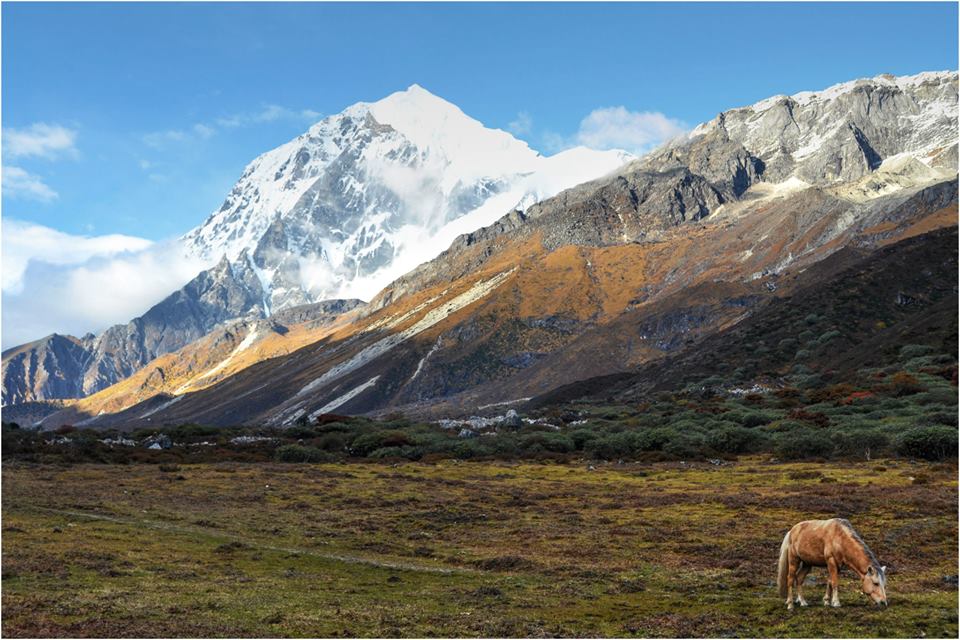
Lastly, if anyone is into yoga, then Pranayama and Asanas really help in fighting Acute Mountain Sickness.
How to pack right
Packing for a trek in summer varies from what needs to be packed for a winter trek. Goecha La in September and October will be much colder than in May. Hence one should pack extra carefully. In post monsoon season, the challenge is mostly with the chilled winds from which we must protect ourselves. Chances of snow, once at the pass, will be there. There might be chances of snow fall on the route as well.
Absolute essentials
- Good quality Trek shoes
- Rucksack not weighing more than 8 kgs
- Clothing in layers – light layers as in full sleeved collared t-shirts with a fleece jacket topped with hollow fill jacket. A Balaclava, water resistant gloves, woollen socks for the nights and cotton socks during the day
- Accessories – Head torch, Sunglasses, toilet kit consisting brush, tooth paste, sun screen lotion, hand sanitiser, trekking poles, water bottle
- Personal medicine kit – should have medicines for fever, cold, stomach upset, acidity, headache, pain killer, Band-Aids
- Miscellaneous – Tissue paper, plastic bags for carrying waste, day pack
- Original and photocopy of government photo identity card (There is no place in Yuksom to get print outs and photocopies)
- Two passport size photos
- Foreigners need to obtain ILP (Inner Line Permit), which you can get outside Bagdogra airport or at the check-post before entering Sikkim from Silguri
- Medical Certificate and Disclaimer (to be filled by the trekker)
- Medical certificate (to be filled by a doctor)
Goecha La – Fun stories
The trekkers hut at Lamuney is considered to be haunted. Many trekkers have had weird experiences while spending a night at the trekkers hut. As far as the stories go, a trekker once was woken up by a strong push on his chest in the middle of the night and when he opened his eyes he saw nothing but felt someone sitting on his stomach. The feeling lasted for some minutes and warded off on its own. Spooky huh? Don’t worry; you get to stay in tents not in the hut 🙂

The day of the cross over to the Goecha La pass from the campsite Lamuney will be the most memorable day of your life. Typically you begin at midnight around 2 AM under the guidance of the starry night sky and ice cold air for your company to reach the first spot from where you get to view the sun rise over Kanchendzonga up-close. The story will not be over at this spot. It is only the beginning. There are many myths about viewpoints in this trek. They are all unique points from where one gets jaw dropping views of the mighty Himalayas. One completes the trek only after reaching the green glacial Goecha Lake. People should not confuse this lake with the Samiti Lake which comes much earlier on the route while coming from Lamuney. The Goecha Lake is the start of Goecha La. It is from this point that you get the views of not just Kanchendzonga but also Mt Pandim, Simovo and the mighty Goecha Peak. It is this place which can be truly called the stairway to Kanchendzonga.
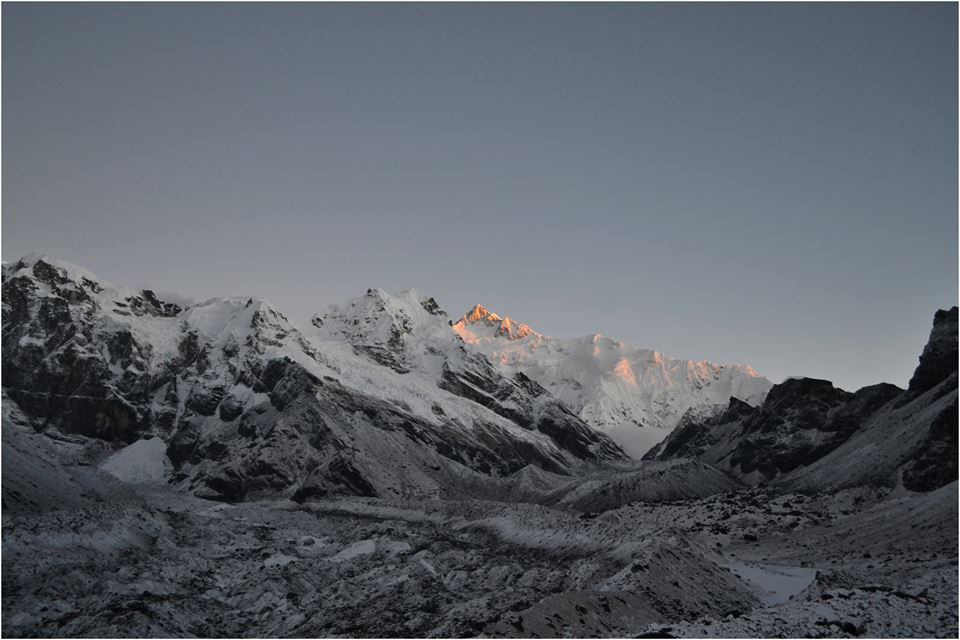
Lastly, Goecha la is a trek very dear to my heart and I insist all to do this trek if intrigued by Eastern Himalayas. No other moderate level trek takes you so close to the mountains that you could feel like you can reach out and touch them. All the fun, thrill and adventure are hidden in the last days of the trek. Ensure to go for it and stay at it!
Often, the famous places across the globe are known for certain things. But, most of the times, there is more to such places than meets the eye. A classic example of this would be Ladakh. Yes, I know that pictures of Ladakh, the lake shown in movie 3 Idiots and Khardung La, would have popped up in your mind. This is precisely where the problem lies. In our search for diamonds, we disregard the rubies, emeralds and sapphires. What I mean by this metaphor is that many go to Ladakh for the three places, known most to them, but miss out on exploring those places that are not so famous. And, it is in these small and slightly remote places that the true charm of Ladakh lies. Explore more about Treks in Ladakh. With this blog, I hope to tell you about the unexplored places in the region that you must make a point to visit. Let’s discover the alluring offbeat places in Ladakh.
Updated on: June 9, 2020
What comes to your mind when I say the word, ‘August’? Let me tell you what comes to my mind. As soon as I hear this word, I think of heavy rain showers, cool breeze and greenery. The idea of trekking in August, usually when the monsoon is at its peak, came to my mind when my friend commented in one of our conversations, “You don’t go for trekking during the monsoon!” My spontaneous reply to him was “Why not?”, and then he was silent.
The question sure may have got him thinking, but I was thinking a lot about it too. Why do people not go for trekking in August, which is only beautiful and soothing? That day, as soon as I reached home, I started researching on “trekking in the monsoon.” My search made me realise something.
Exciting Treks in August Click Here to Explore!
Home to some of the highest peaks in the world, Nepal is arguably the best mountaineering destination on earth. For a long time, people from across the world have been coming here to experience adventure and give themselves a challenge. The popularity of trekking in the country has opened so many new trails for thrill seekers. Mountain passes, glacial lakes, valleys and peaks themselves, what don’t such tours take you to? Now, obviously, Mount Everest is the most sought-after peak by experienced mountaineers because it is the world’s highest. Annapurna is another distinguished peak among mountaineers.
Now, here is the catch. It is not just the peak you can trek to. If you don’t consider yourself that experienced or fit or adventurous, then you can also hike just to its base camp or opt for the popular Annapurna Circuit Trek. If you ask me which one is better, Annapurna Base Camp Trek (ABC) or Annapurna Circuit Trek (ACT), then even I am confused because both of them has their own different experience. It is almost like asking someone, which ice cream flavour is better, chocolate or vanilla, or which Thrash Metal band is better, Metallica or Slayer. For everyone’s sake, including my own, let us do a comparative study of the two trekking routes.
To make it easier on myself, I have decided to make the comparison on the basis of the difference in route, altitude, challenge factor and a few unrelated aspects as well. Keep reading to see how it goes.
Reading has always been my most favourite thing to do. I remember reading with a torch inside the sheet, way past my bedtime as a kid. Even today, no matter how busy I am in life, I never go to sleep without a book. And when someone reads as much as I do, it becomes impossible for them to not want to travel. In my experience, all my bookworm friends, (that is quite literally all my friends) are fond of travelling. The inverse might not be true; all travellers may not be readers, but trust me when I say that almost all readers are travellers and backpackers. When we read something, our mind creates images of those things side by side and therefore all these years of reading about faraway places has awakened a side of me that craves adventures in unknown places. Though I have not travelled as much as I would like to, owing to demands of school and work, whenever I can squeeze out a break of a few days, I totally go for it. And when I do get to travel, I almost always find myself planning a trip to the mountains.
One of my very first getaways to the mountains was in Manali. It was the second year of my college, and I was just getting used to my new-found freedom! So three of my buddies and I decided to spend a few days of our semester-end break doing nothing, but travelling. It is important to mention that since we were quite young and inexperienced, we chose a destination closer to home and Himachal Pradesh was as far as we could have gone from Delhi at that time. Nonetheless, it was a dream-come-true for all of us as this was our first vacation ever without the constant restrictions imposed by our parents! Upon reaching Manali and spending two days in sightseeing and clicking thousands of pictures, we started to look for something else, something more adventurous to do. And when you are in the mountains for the first time, there is nothing better than trekking to give you that sweet taste of adrenaline. Dev Roopa trek’s surreal beauty helped us zero in on the destination and what came then is still etched in my memory.
Read on to know more about this trek on which nature presents itself clad in its finest of attires.
The scenery of sky-piercing mountains, with a radiant sun shining in the backdrop, only soothes one’s soul. The view makes you forget every little stress of your hectic life and brings you immense peace. For such an experience, you do not have to travel too far. A flight or drive towards north, and you are here. I am talking about, of course, the eternally serene and surreally beautiful Spiti Valley. If you don’t trust me, and why should you, you haven’t even met me, will you take a respected novelist and poet’s word? Rudyard Kipling, the English writer, said the following words about the majestic place: “…a world within a world” and a place where the gods live.” Of course, this was a long time ago, about hundred years, but the place hasn’t changed since. It is still drenched in that same elegance as during that time. It is almost like none of the advancements in the rest of the world, or any person, place or thing have been able to touch and influence its tranquillity.
“Chasing angels or fleeing demons, go to the mountains”. This famous quote by Jeffrey Rasley explains my situation right now! For some, mountains is just an escape for a while, but for me, it feels like home. Whenever I am bored with the city life, and the pollution takes a toll on me, I head to the mountains! I have always loved mountains. I read about Chandratal a few years back, and from that moment on it’s always been on top in my bucket list. Nothing can be more soothing and rewarding than admiring the bounties of nature and that too by doing a trek to a place which is still unaffected by the ever-increasing endeavours of human beings.
Even being a travel aficionado and an avid blogger, until recently, I didn’t get a chance to see the beautiful (a relatively modest adjective) Chandratal lake. Probably even now, the thought of visiting it would not have crossed my mind, had a colleague, who is an achiever when it comes to visiting some of the highest lakes and glaciers in the world, not mentioned it.
Ladakh, as soon as the name is uttered, our minds are filled with mesmerising images of snow-capped peaks, high-altitude lakes and centuries-old monasteries. It is the aesthetic allure of this gifted place that beckons thousands of tourists every year. They probably come here to spend another vacation, but return with an experience that is unique and inexplicable. A great way to explore the spectacular landscape of Ladakh is by going on a trekking expedition, and that is something I believe everyone must try. The rugged terrain of this region offers all kinds of trekking trails, be it a strenuous one taking you to an altitude of over 20000 feet or easier ones that anyone can go for.
Let’s discover some amazing treks that you can try in Ladakh, even if you are a novice. People consider trekking as a very demanding activity which requires a high level of physical fitness. To be precise, the belief is not completely untrue, but will power and determination can make us achieve anything and everything. I have a job which requires me to sit in front of the computer for 9 hours a day and 6 days a week. And I confess, I do not work out too much; only when my wife pulls me to the gym with her. Does my lifestyle sound too similar to yours? It’s alright; we are just regular, modern-age people who are working hard to earn name and fame. You can imagine my physical condition; I’m not too fit but I’m not a couch potato either, and I have been on a few treks just in the past few years. Not in Ladakh, I am still to realise this dream of mine, but in Goa and Kerala. And yeah, they were FUN. More amazing than a tour I have taken to a hill station or some other place.
A few of the various trekking trails in Ladakh are fit for beginners. Read further to know the several options available from Treks in Ladakh For Beginners that you chose from.
Everyone in their right minds would want their life to be peaceful, rather than full of turmoil. Some take to meditation, some shut themselves from the world, some perform yoga, some look to religion and some resort to travelling like a nomad. If you are indeed thinking of heading out in search of inner peace, alone or with a group, then you do not have to go too far. There are places within our “great country”, where you can be immersed in utter serenity, with nothing troubling you. You guessed it, such places are far from the city. Isolated from modern civilisation, these places are mostly in the mountains.
My personal choice for finding peace has been to head to the Spiti Valley and the adjoining Lahaul region, in Himachal Pradesh. Its significance for serenity seekers is twofold: there is nothing here except for untouched nature all around, and Buddhism pervades through it. When you combine these two aspects, you know you will never have to go anyplace else to find peace and may be even yourself. Peace, you can find at a plethora of Buddhist monasteries, called “gompa” in the local language, that are mostly perched atop mountains, making for a spectacular view. If you have seen Lord of the Rings, then these would look to you like the White Castle of Minas Tirith. Keep reading to learn about the gompas in the region. These alluring monasteries of Spiti Valley will surely leave you astonished!
The three months of monsoon with heavy rains and humidity are the most irritating time of the year, especially if you stay in those polluted cities. Before you can dry yourself with a towel after bathing, the humidity and sweat negates everything. You don’t feel like going out because the roads are all flooded as are parks and grounds. I always get the urge to leave home and go some place, where rains can be enjoyable. You will never believe what I found on the internet while searching for ways to spend the monsoon away from all the fuss. I found that I could go trekking in the Himalayas! Now, many believe that trekking is not a monsoon activity, but there are several hikes in the Himalayan Region that are specially meant for the rainy season. So, keep reading to learn about some incredible places you can trek to if you want to escape the fussy rains. Explore these monsoon treks in the Himalayas and take an experience of a lifetime!
Hampta Pass – Himachal Pradesh
A moderate level hike with a maximum altitude of around 14000 feet, it will take you to a surreal meadow with snow-capped peaks in the background and colourful flowers on the valley bed. Increase the fun by trekking further to Chandratal.
When you hear the word Ladakh, what comes to your mind? The mountains? The monasteries? The lakes? If you are an enthusiastic driver, then definitely its winding roads and mountain passes will flash before your eyes. Your bikes must call to you to take them on a long drive, and no other place will satisfy them and you other than Ladakh. You are in extreme luck as you can now plan and go on a Leh Ladakh bike tour easily. You know how and why? Because a lot of adventure clubs and tour agencies have started organising such incredible trips.
Explore Leh Ladakh Motorbike Tour
Over the last few years, the popularity of bike trips to Ladakh has literally skyrocketed. And seeing the trend, more and more clubs and travel agencies are coming up with self-drive or group drive itineraries to the one and only “Land of High Passes”. There have been many reasons for the rise in the popularity of such bike excursions, and while reading about them below, you may get an even stronger inspiration to do them at least once.
Explore Exciting Motorbike Trips in India
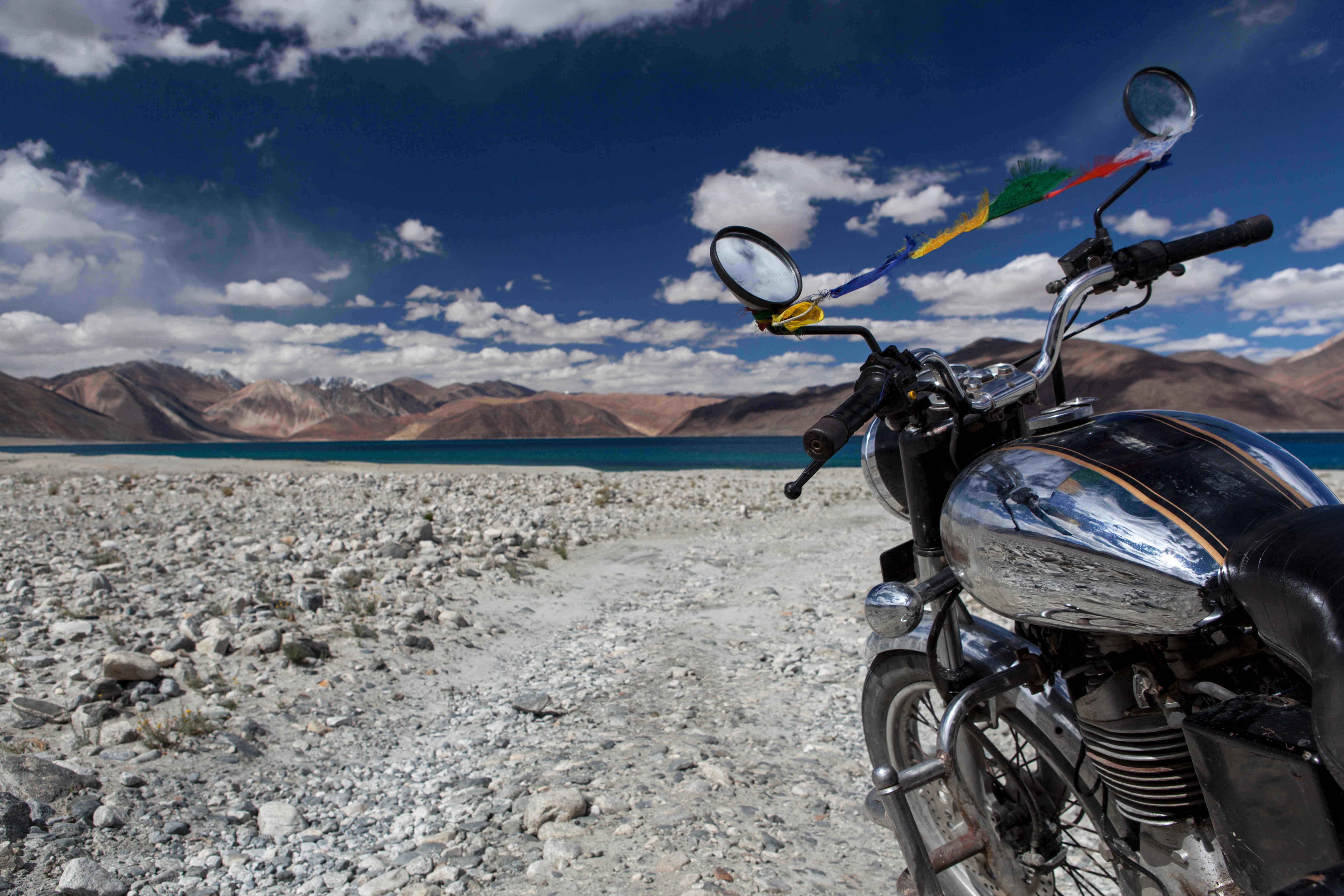
A Perfect Summer Escapade
One of the main reasons why people from the plains go to the mountains is the summer heat. The cool realm of Ladakh is the perfect place to go to, to avoid overheating, not of your electrical appliances, but of yourself. Even when the sun is cooking the plains are on a barbeque grill, Ladakh stays almost untouched. Rarely, the summer temperature here exceeds 25 degree Celsius. 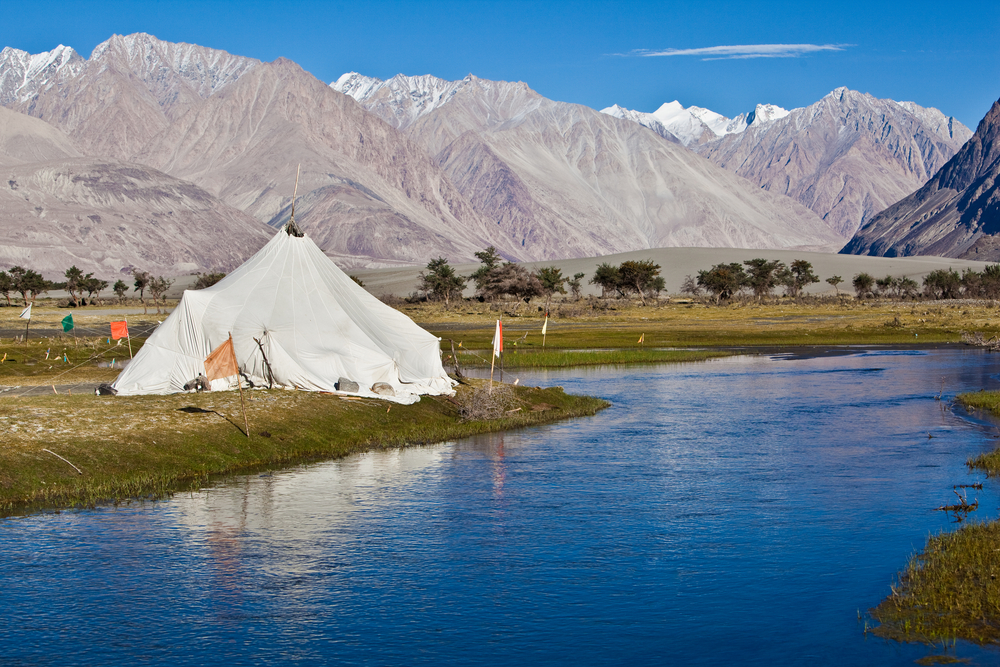
The Inner Adventure Junkie Satisfied
There must be many of you, who have been doing the same routine day in and day out like going to college or work and then back home. It is an innate nature to be fed up of monotony and do something else for a change. If you like adventure, then a time must come when your brain feels like it will explode. For such people, Ladakh bike trip will prove to be immensely pleasurable and satisfying. Riding down on roads that are only as wide as a truck, at some points, with high cliffs on one side and a deep trench on the other, will surely make your adrenaline rush.
Add to that the continuously winding nature of the roads and not always knowing which way it will turn till it actually turns. If your hair is rising by just reading it, it should be proof enough that the trip will satisfy even the most daring of devils. Such sections will at best make your heart beat faster, but Gata Loops, arguably the most dreaded section on the Leh-Manali Highway will metaphorically make it leap up to your mouth. It is a series of over 20 blind curves and hairpin bends just before Nakee La. If you don’t know what it is, then just take a look at the image below and you would know what I mean. At certain junctures, the road may be nothing but a muddy pavement, full of rocks and boulders, cut into the mountain, with a cliff hanging over your head! 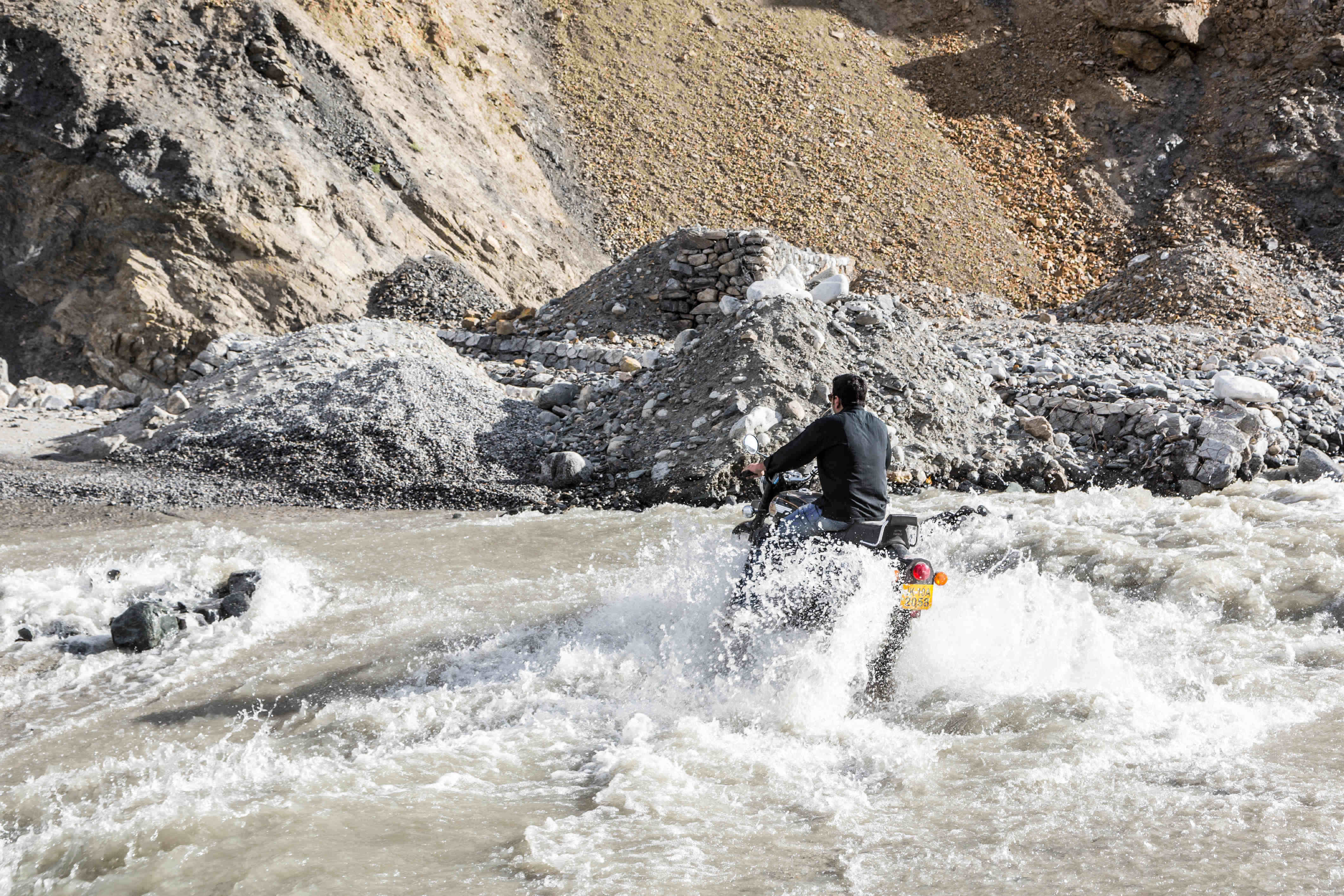
Freedom to Follow Your Own Path
Many of you would argue that why is going on a bike tour to Leh Ladakh a better idea than going on a proper vacation tour. The answer is simple, pre-formed trips don’t always allow you the freedom to make your own path. Most itineraries have fixed schedules for sightseeing and generally reserve only a specific amount of time at every attraction. But, what if you like a particular place so much and want to spend more time there? You can’t always have that. Bike trips allow you to move at your own desired pace, and stop at every en route spot you like. And, if the rest of the group gets ahead, you can always catch up later.
Another argument that may be put forth in this context is why a bike trip specifically, as it could also be done on say, a Jeep drive. Yes, definitely it can be done on a Jeep, but even if you open the windows, you won’t be able to feel the wind on your face like on a bike. The heavy sound of the bike’s engine rebounding off distant mountains, gives motorists a sort of pleasure that only they understand. 
A Chance to Camp amidst Nature
One more way in which bike tours to Ladakh score over tour packages is accommodation. Most tour packages would take you to Leh on a flight and then accommodate you at a hotel. I am all for comfort, but sometimes the calling of nature is a lot louder than that of comfort. Sometimes, staying at a camp is a better experience than staying at a hotel. On a Ladakh bike trip, you can stop at places like Sarchu and Jispa to camp under the clear sky and breathe the freshest air around. If any of your known people recently undertook such a venture, they must have told you that at night, they got the clearest view of the Milky Way imaginable.
Not just Jispa and Sarchu, there are a lot more places here, where you may camp, such as on the banks of Pangong Tso, the lake featured in 3 Idiots, and on sand dunes in the Nubra Valley. If you are not going on a proper tour, and are taking your own bikes out on your very own itinerary, then you can set up tents, wherever you find a place to do so. An extremely beautiful place to set up camps would be Morey Plains, probably the flattest place in Ladakh. A well-built highway with nothing but open spaces and distant mountains on all sides…What better place to stay! This is also the place for you to open that throttle nicely and speed away because doing it on the mountainous stretches is a strict no, no.
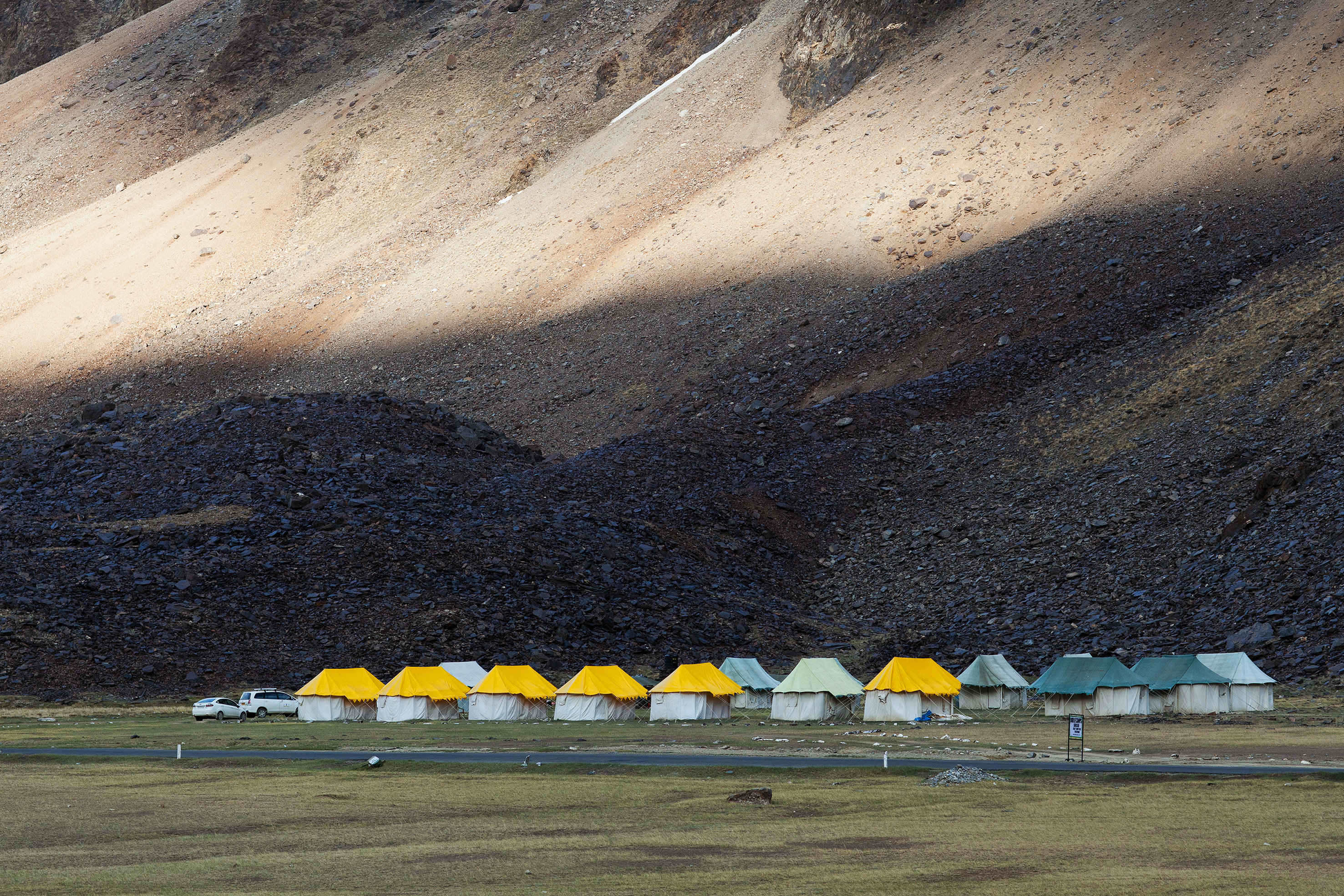 Journey of Contrasts
Journey of Contrasts
If nothing else, a motorcycle trip to the region is a journey of contrasts. Be it with respect to the scenery, people or the nature of the drive itself, nothing is static. Whether you drive on National Highway 1 to Srinagar and then on National Highway 1D to Ladakh or on the famed Leh-Manali Highway, the landscape will show an immediate transformation. The moment you cross Zoji La (NH1D) or Rohtang Pass (Leh-Manali Highway), you will notice that the greenery is slowly fading away and a barren land is beginning to appear. A person like me would keep stopping at various junctures just to see how much transformation has come to the landscape and take pictures to compare. For the ultimate experience, you could go around in a loop, meaning enter Ladakh from Manali and exit via Zoji La in Srinagar. Greenery to barrenness and back to greenery again will bring your tour full circle.
Just as you reach Ladakh, you will see that even the people look different in their appearances and attire. Here, you will see not temples or mosques or gurdwara, but Buddhist monasteries because Buddhism is the main religion of Ladakhis. Every village or town you pass by, you might see a monastery, either perched on a hilltop or built on flat ground. In continuation of the point I mentioned earlier about bike tours allowing you freedom to stop wherever you feel like, you can very well visit every monastery on the way.
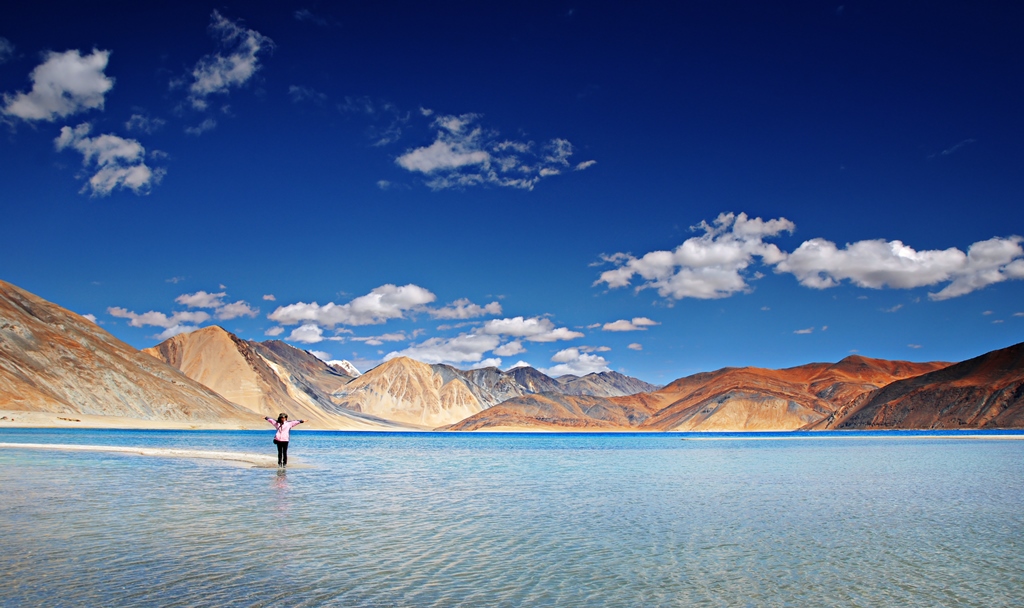
Opportunity to Drive on Snow
There are places in Ladakh, where you can mostly be assured of seeing snow, and I am not talking about 20000-25000-feet high mountains. Such places are of course the mountain passes for which the regional highways are renowned for. Passes like Khardung La, Chang La, Tanglang La, Kunzum La, Lachulung La and Nakee La that are at an altitude of more than 15000 feet might have some snow even in summers. So, remember to carry a pair of snow chains to let your metal beast grip the surface easily. You would not want to slip on the solidified ice because it will be cold and it will hurt!
These are not the only reasons for the popularity of motorbike excursion to the region of Ladakh. There are many others that you will come to know when you talk to individuals, who have actually been a part of such trips. But, these should be enough to give you a reason to prepare your bikes, and head off to Ladakh. Remember, you have a very narrow window to do so as the region will be highly inaccessible in winters. June, July, August and September are the only months when you can come here on your bike.
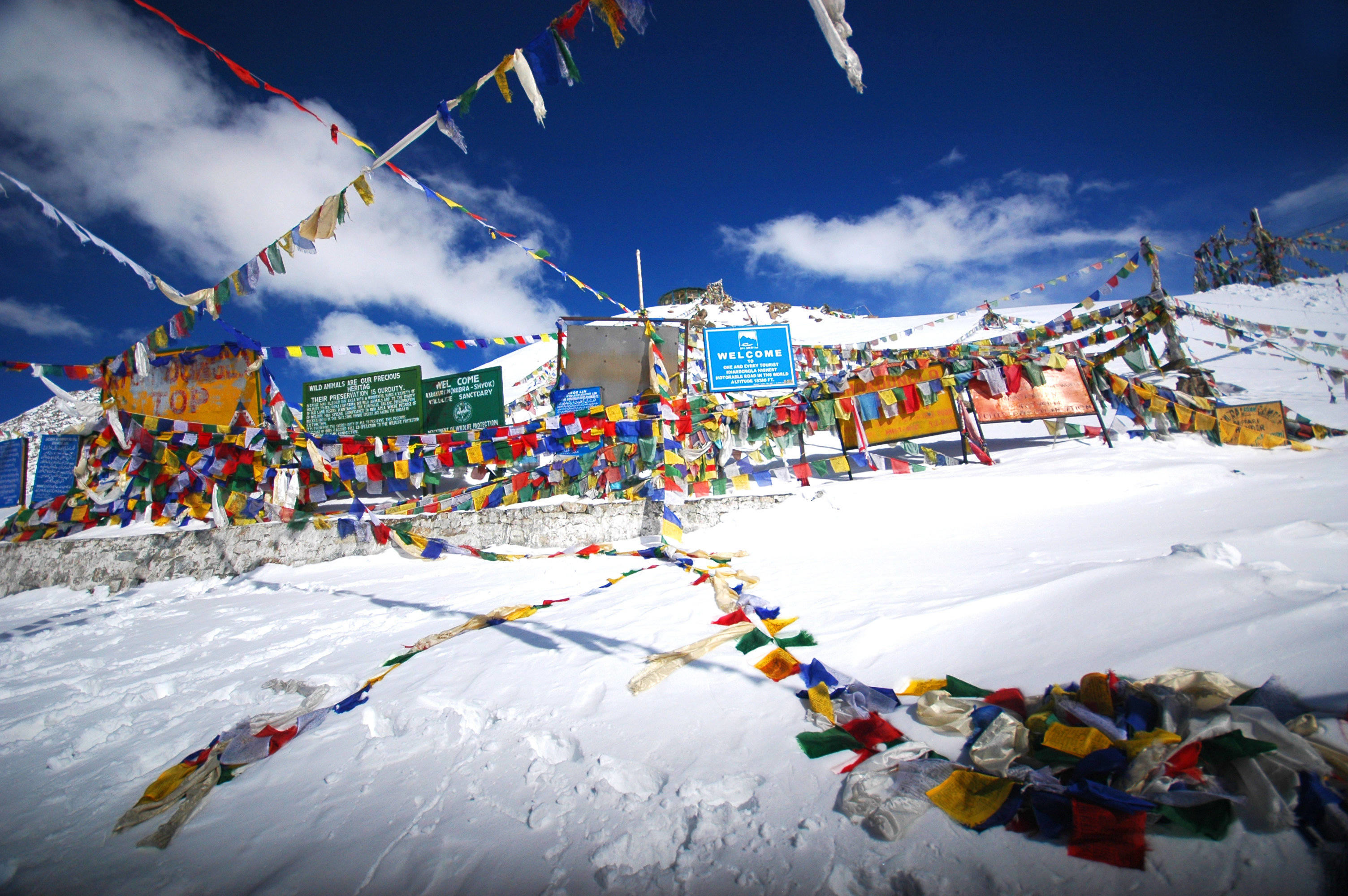
Best off-beat Himalayan Treks
The Scottish-American writer, John Muir once said, “The clearest way into the Universe is through a forest wilderness.”
And man, was he right! What could be a better way for people like us to get close to nature than getting lost in the forests! Truthfully, there’s not much of true nature left around us. Humans have gone everywhere; they have taken over nature and established their empire. Today, sky-piercing towers make the skyline, and bustling, over-crowded metropolises, dominate the landscape. Sometimes, it even gets hard to find a lush public park in cities.
To come across the true bounties of nature, I suggest you go on a trek. And, to find nature, you do not even have to go far to any international destination. The Himalayas in the North and Northeast, and the Western Ghats in the South are perfect for trekkers. From easy hikes that are almost like a walk in the park to some demanding ones that require you to utilise every muscle in your body, all kinds of trekking excursions are possible here.
Roopkund, Har Ki Doon, Goecha La, Beas Kund and Nag Tibba are some of the most taken trekking trails in India. However, if you are one of those, who like to, as our favourite Star Trek character, Captain Kirk, says, “Boldly go where no man has gone before”, then the following are some treks you can consider for your next excursion. I suggest that you try at least a few of these in 2016 itself! Life is too short to be delaying such amazing experiences for the future.

